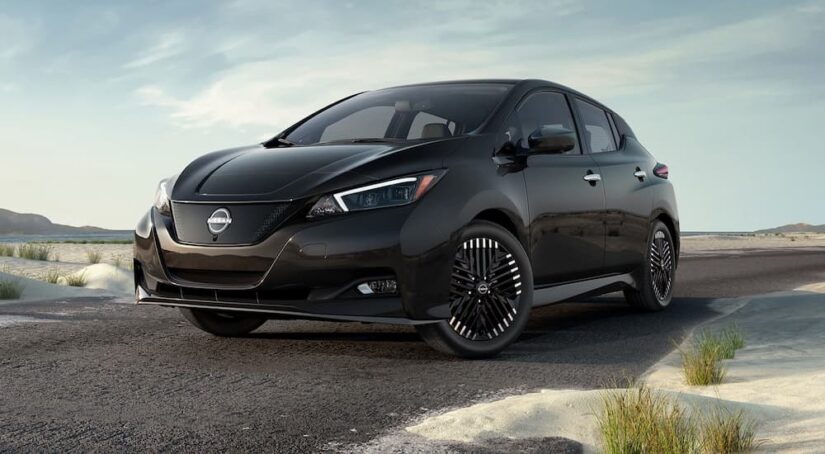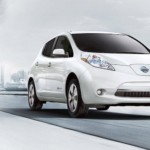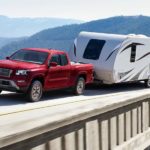If you’re interested in finding electric vehicles for sale, there’s never been a better time to shop. Many automakers have entered the EV field recently, and there are plenty of choices, including specialty vehicles like electric pickup trucks and off-road SUVs. But for many drivers, the original mass-market electric car, the Nissan LEAF, is still the best choice around. Since the model has been around for a while, Nissan has had plenty of time to optimize everything from the powertrain to the interior layout.
For the 2024 model year, the trim lineup has been simplified to two options: the SV and SV PLUS. These two trims are similar, if not identical, in most respects, but each one comes with its own powertrain, which makes a big difference. Instead of having to compare and contrast a whole list of trim levels with numerous tiny differences, you can simply choose whether to get the more affordable option or the one that has an upgraded powertrain. To help you determine whether the SV PLUS is worth the money or you’d rather take the budget-friendly SV, let’s look at the similarities and differences between the two trims and what these factors mean for you as a driver.
Powertrain Differences
The most significant difference between the two trims is what powertrain you get. The LEAF SV has a 40 kWh battery paired with an electric motor that produces 147 hp and 236 lb-ft of torque. Behind the wheel, that power determines how quickly you accelerate and how fun the LEAF is to drive. Since EVs provide torque almost instantly compared to gas-powered cars, the SV feels perky and accelerates quickly, which can come in handy while passing on the highway. When it comes to range, this setup can go an estimated 240 km on a full charge.
Upgrade to the SV PLUS, and you’ll get a larger 60 kWh battery and a more powerful electric motor. Thanks to its ability to crank out 214 hp and 250 lb-ft of torque, this motor allows for more thrilling driving dynamics and lets you speed up with ease. While the motor is more powerful, that doesn’t lower the range of the SV PLUS since the bigger battery more than makes up for it. With an estimated range of 342 km, the SV PLUS can go an extra 100 km on a full charge. If you have a longer commute or like to take road trips, then this difference alone may be reason enough to opt for the SV PLUS.
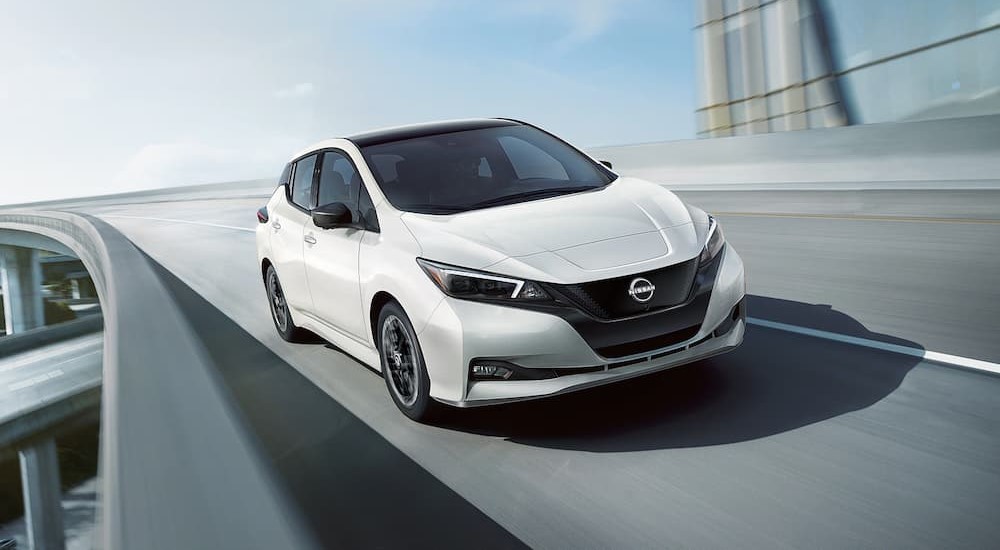
Interior and Exterior Features
Since the SV PLUS has a more powerful motor and a higher-capacity battery, you might think that you have to sacrifice interior space in order to make room. But that’s not the case with the Nissan LEAF. Both the SV and SV PLUS have a generous 3,285 litres of interior volume, with a rear row of seating that can fold flat and has a 60/40 split for maximum versatility. Looking at other interior features, both trims include these features as standard:
- An eight-way power-adjustable driver seat with two-way lumbar support for increased comfort and less fatigue on long drives
- Two USB ports up front and two in the back, so everyone can keep their mobile devices charged
- Heated seats in the front and back, plus a heated steering wheel for staying warm and cozy on cold winter days
- An auto-dimming rearview mirror that provides good visibility in a variety of lighting conditions
- A 20 cm colour touchscreen display for controlling the infotainment system
- Apple CarPlay and Android Auto compatibility so you can use your preferred navigation, communication, and entertainment apps
- Bluetooth connectivity for streaming audio and taking phone calls hands-free
- Nissan’s Safety Shield 360 suite of driver assistance features, including Intelligent Emergency Braking with Pedestrian Detection, Intelligent Lane Intervention, Rear Cross Traffic Alert, Rear Automatic Emergency Braking, and more
Both trims can thank their exterior designs for helping optimize their efficiency. Both come standard with an aerodynamic silhouette, featuring an underbody cover, a rear diffuser, and a spoiler so that they can cut through the air with as little drag as possible. Both also feature heated outside mirrors, so you don’t have to worry about frost, and bright LED headlights for driving at night. The best way to tell the two trims apart by looking at their exteriors is by finding the exclusive PLUS badge that adorns the SV PLUS.
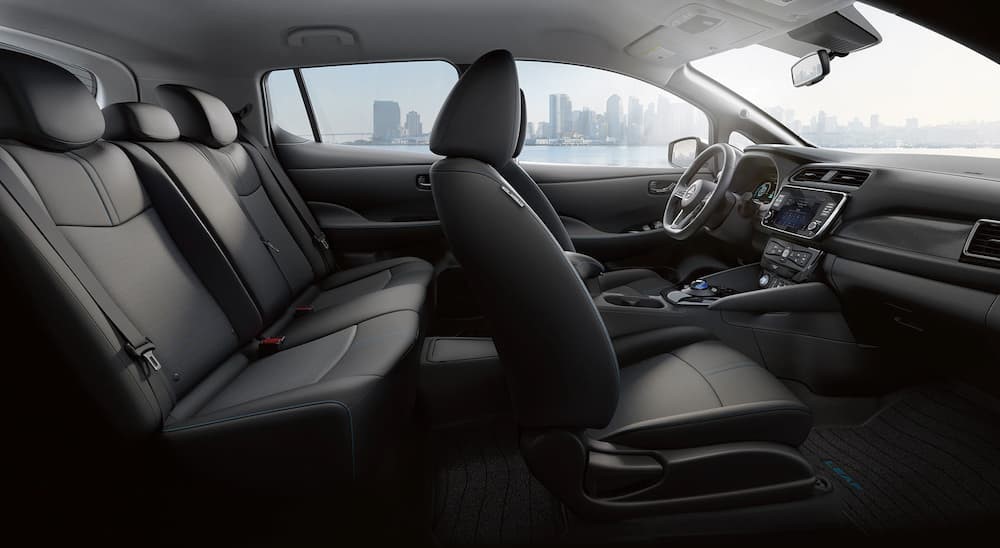
Charging Times
Both models are compatible with three different levels of charging. A portable charge cable comes standard and allows you to use either a 120V outlet for slower Level 1 charging or a more powerful 240V outlet for faster Level 2 charging. Most household outlets are 120V, but it’s possible to have a 240V outlet installed for home use. Level 3 charging, also known as DC fast charging, is only available on the go at CHAdeMO public charging stations but is significantly faster than even Level 2 charging.
Both trims charge at about the same rate when using Level 1 or Level 2 charging, but because the SV PLUS has a higher-capacity battery, it takes longer to fully charge. For instance, it takes eight hours for the SV to reach a full charge, giving you 240 km of range. The SV PLUS takes 11.5 hours to fully charge, but that extra time gives you an additional 102 km of range. When it comes to Level 3 charging, the SV PLUS has a 100 kW quick charge port, which enables faster charging than the 50 kW port on the SV. Because of this, the time disparity is much smaller at a DC fast charging station: the SV can reach 80% in 40 minutes, and the SV PLUS can reach 80% in 45 minutes.
Which One Is Right for Me?
Looking at the similarities between the interior and exterior features, you might be tempted to think that the two trims are basically the same. But that disparity between the powertrains can make a huge difference in your day-to-day experience as a driver. In addition to simply enhancing the thrill of the ride, the more powerful motor has practical benefits, like letting you speed up on the entry ramp more easily and pass more quickly when driving on the highway.
That extra 100 km of range is also nothing to sneeze at. As charging infrastructure is still being built, having more range lets you be more flexible with your routes and makes it easier to go on big road trips through rural areas where charging stations are still in scarce supply. Even if you mostly stay close to home, it’s nice to know that forgetting to plug the car in one night is not as likely to ruin your morning the next day.
That said, if you have a short commute or just need a vehicle for running errands around town, the SV might be the smarter choice, especially if you trust yourself to keep the battery charged. You’ll still get the same lineup of comfort, convenience, and safety features, so if the improved powertrain isn’t a big draw for you, you can save a little money without sacrificing much. Either way, you’ll get a well-rounded EV that’s beloved for being efficient and versatile.
